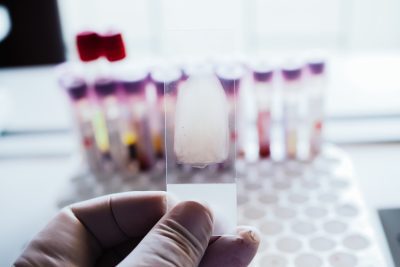Leg pain affects nearly everyone at some point, ranging from routine muscle soreness after exercise to the occasional cramp that resolves quickly. This commonplace nature makes it easy to dismiss leg discomfort as merely inconvenient or temporary. However, certain leg pain characteristics signal a potentially life-threatening condition called deep vein thrombosis (DVT) – a blood clot forming in the deeper veins typically of the lower extremities.
These dangerous clots create immediate risk to the affected limb through restricted blood flow. More alarmingly, they can break free and travel through the bloodstream to the lungs, creating a pulmonary embolism that can prove rapidly fatal without prompt intervention. This migration explains why seemingly localized leg pain warrants serious attention when specific warning signs appear.
Understanding the distinctive characteristics that separate dangerous clots from ordinary leg discomfort allows for prompt recognition and appropriate response. While most leg pain doesn’t indicate serious problems, recognizing these critical differences literally saves lives by enabling timely medical intervention before potentially catastrophic complications develop.
7 warning signs your leg pain requires immediate attention
- Unexplained swelling, particularly affecting only one leg, represents the most common visual indicator of potential blood clots. This unilateral swelling develops as the clot blocks normal blood flow return from the leg, causing fluid to accumulate in surrounding tissues. Unlike the bilateral swelling often seen with heart or kidney issues, DVT typically creates asymmetric enlargement where one leg appears noticeably larger than the other. This difference becomes particularly apparent when comparing calf or thigh circumference between legs.
- Unusual warmth concentrating in a specific leg area often accompanies DVT. This localized heat stems from the inflammatory response triggered by the clot’s presence. While touching the skin, you might notice a distinct temperature difference compared to the corresponding area on the opposite leg. This warmth typically concentrates around the clot location, most commonly in the calf or thigh region, rather than affecting the entire limb uniformly. The combination of unexplained warmth with swelling substantially increases the likelihood of clot presence.
- Skin discoloration manifesting as redness or a bluish-purple hue often indicates underlying vascular issues. This color change reflects both the inflammatory response to the clot and the compromised blood flow in the affected area. Unlike the temporary redness associated with exercise or irritation, clot-related discoloration typically persists and may intensify over hours or days. The affected area might appear unusually shiny or have a stretched appearance due to underlying swelling.
- Pain that intensifies when standing or walking signals potential vascular rather than muscular origins. While muscle strains typically cause consistent discomfort regardless of position, DVT pain often worsens with physical activity and improves somewhat with elevation or rest. This positional relationship reflects how gravity and muscle contraction affect pressure within the compromised vein. The discomfort frequently concentrates in the calf but can extend throughout the leg depending on clot location and size.
- Cramping that doesn’t resolve with typical remedies warrants particular attention. Unlike routine muscle cramps that usually respond to stretching, massage, or hydration, DVT-related cramping tends to persist despite these interventions. This persistent discomfort often feels deeper within the leg rather than superficial and may have a different quality than typical muscle cramps – described variously as pressure, heaviness, or aching rather than the sharp, spasmodic sensation of routine cramps.
- Skin tenderness along specific vein pathways provides another critical warning sign. When gentle pressure along major vein routes causes disproportionate pain, this suggests inflammation within the vein itself (phlebitis) – either accompanying or preceding actual clot formation. This tenderness often follows linear patterns tracking major veins rather than affecting broader muscle groups. The sensitivity may extend beyond the primary pain location, sometimes reaching from ankle to groin along the great saphenous vein path.
- Chest pain or breathing difficulties developing alongside leg symptoms creates an immediate emergency situation. These upper body symptoms suggest a clot has already broken free and traveled to the lungs, creating a pulmonary embolism. Even mild shortness of breath, unexplained cough, chest discomfort, or rapid heartbeat accompanying leg symptoms requires immediate emergency response. These pulmonary symptoms sometimes develop without dramatic leg pain, making any breathing changes in the context of risk factors particularly concerning.
Understanding why blood clots form in legs
Several specific mechanisms contribute to leg clot formation, explaining both why they develop and who faces highest risk. Understanding these factors helps identify personal risk while enabling preventive measures.
Venous stasis creates the foundational condition for clot development. Blood naturally flows more slowly in leg veins, working against gravity to return to the heart. When this already-challenged flow further slows – during prolonged sitting, bed rest, or limited mobility – blood cells and clotting proteins remain in contact longer, increasing coagulation risk. This stasis explains why long periods of immobility, whether from travel, hospitalization, or sedentary lifestyles, significantly increase clot risk.
Vein wall damage provides another critical factor in clot formation. Injuries to the inner lining of veins create surfaces where platelets and clotting factors congregate to initiate the coagulation process. This damage occurs through various mechanisms, including physical trauma, inflammatory conditions, or placement of intravenous catheters. Even seemingly minor injuries can trigger the clotting cascade when combined with other risk factors.
Hypercoagulability – an increased tendency for blood to form clots – contributes substantially to DVT risk. This condition develops through both inherited genetic factors and acquired causes. Hereditary clotting disorders like Factor V Leiden or Protein C deficiency create lifelong increased risk, while acquired hypercoagulability associates with conditions including pregnancy, hormone therapies, cancer, smoking, and certain medications. This heightened clotting tendency explains why some individuals develop DVTs without obvious triggering events.
Venous compression from external sources occasionally initiates clot formation. Tumors pressing against veins, anatomical abnormalities, or even tight clothing that restricts blood flow can create the conditions for clotting. May-Thurner syndrome, where anatomical variations cause the right iliac artery to compress the left iliac vein, exemplifies how structural issues increase DVT risk, particularly in the left leg.
Population groups facing elevated blood clot risk
Certain individuals face substantially higher DVT likelihood based on risk factor combinations or specific circumstances. Recognizing these high-risk populations enables appropriate vigilance and preventive measures.
Recent surgical patients experience dramatically increased clot risk, particularly following orthopedic procedures involving the lower extremities. Hip and knee replacements create both direct vein trauma and post-operative immobility, substantially increasing DVT likelihood. This elevated risk persists for several weeks after surgery, necessitating both preventive measures and heightened attention to potential symptoms during recovery.
Cancer patients face up to four times higher clot risk than the general population. This association stems from multiple mechanisms, including tumor-produced clotting factors, inflammatory responses to malignancy, central venous catheter placement, and reduced mobility during treatment. Certain cancer types – particularly pancreatic, brain, ovarian, and gastric malignancies – associate with especially high clotting risk. This relationship works bidirectionally, with unexplained clots occasionally leading to cancer diagnosis.
Pregnant and postpartum women experience naturally increased clotting tendency as the body prepares to limit blood loss during delivery. This physiological change, combined with vascular compression from the growing uterus and reduced mobility in later pregnancy stages, creates substantially elevated risk that persists for approximately six weeks after delivery. This risk increases further with cesarean delivery, advanced maternal age, or pregnancy complications like preeclampsia.
Long-distance travelers frequently develop what medical professionals call “economy class syndrome” – clots resulting from prolonged seated immobility during air, car, or train travel. The risk becomes particularly significant for journeys exceeding four hours, especially when combined with dehydration or limited leg movement. While air travel receives most attention, any form of prolonged seated immobility creates similar risk.
Hormone therapy users, including those taking combined hormonal contraceptives or menopausal hormone replacement, experience moderately increased clotting risk. Estrogen particularly affects coagulation pathways, with higher doses creating greater risk. This hormone-related risk multiplies substantially when combined with other factors like smoking, obesity, or inherited clotting disorders, explaining why medical professionals carefully assess overall risk before prescribing these treatments.
The deadly progression from leg clot to pulmonary embolism
Understanding how localized leg pain potentially transforms into a life-threatening emergency explains the urgency surrounding DVT recognition and treatment.
The embolization process begins when portions of the original leg clot break free from the vein wall. These fragments, called emboli, enter the circulating bloodstream and travel through progressively larger veins toward the heart. The body’s own circulatory patterns inevitably direct these fragments through the right heart chambers and into the pulmonary arteries – the only path blood can take after returning from body tissues.
Pulmonary artery obstruction occurs as these traveling clot fragments reach the lungs, where vessels progressively narrow into smaller branches. The emboli eventually reach vessels too small to pass through, creating sudden blockages. These obstructions prevent blood flow through affected lung segments, creating both immediate respiratory effects and strain on the right side of the heart that must pump against this new resistance.
Respiratory compromise develops as blocked lung vessels prevent oxygen transfer in affected segments. Small emboli might create minimal symptoms initially, but larger or multiple clots can obstruct substantial portions of the pulmonary circulation, dramatically reducing oxygen levels while increasing breathing effort. The resulting symptoms range from mild shortness of breath to severe respiratory distress depending on occlusion extent and underlying lung health.
Cardiovascular collapse represents the most serious potential outcome, particularly with massive pulmonary emboli blocking major pulmonary vessels. The sudden increase in pressure within the pulmonary system forces the right ventricle to work against resistance it cannot overcome. This strain can cause right heart failure, dropping blood pressure and reducing oxygen delivery to vital organs throughout the body. This catastrophic progression explains why large pulmonary emboli have mortality rates approaching 30% when treatment delays occur.
The time-critical window between initial leg symptoms and potential embolization underscores the importance of prompt recognition and intervention. While some clots remain stable for extended periods, others embolize within hours of formation. This unpredictable progression creates the urgency surrounding DVT symptoms, as no reliable method exists to predict which clots will remain stable versus those that will break free with potentially fatal consequences.
Critical first steps when blood clot symptoms appear
Appropriate response to potential DVT symptoms significantly impacts outcomes through both immediate safety measures and timely medical intervention.
Emergency medical contact becomes appropriate when symptoms appear suspicious, particularly when risk factors exist or symptoms develop suddenly. Either emergency services (for severe symptoms or breathing difficulties) or urgent care facilities provide appropriate initial assessment. When describing symptoms, specifically mentioning concern about possible blood clots helps medical dispatchers assign appropriate priority and prepare receiving facilities.
Position management during transport matters significantly. When awaiting medical attention, elevating the affected leg slightly above heart level (approximately 6-10 inches) optimizes blood flow patterns to reduce swelling and pain. However, excessive movement, massage, or manipulation of the painful area should be strictly avoided, as these actions potentially dislodge existing clots. Sitting positions with legs dependent (hanging down) particularly increase risk during transport.
Medication avoidance becomes important while awaiting evaluation. Pain relievers like aspirin or ibuprofen that affect blood clotting should be avoided until professional assessment rules out bleeding risks. Similarly, supplements with known anticoagulant effects (including high-dose vitamin E, ginkgo biloba, or garlic supplements) should be temporarily discontinued while awaiting diagnosis.
Detailed symptom documentation helps medical professionals assess progression and severity. Noting when symptoms began, how they’ve changed over time, associated factors (like recent travel or surgery), and any risk factors provides crucial diagnostic information. Taking photos of visible swelling or discoloration offers objective evidence of changes that might fluctuate before medical evaluation occurs.
Hydration maintenance supports optimal blood flow and reduces additional clot risk while awaiting care. Unless medical conditions contraindicate increased fluids, drinking water consistently helps maintain appropriate blood viscosity. However, alcoholic beverages should be strictly avoided as they potentially increase dehydration while interacting with potential treatment medications.
Diagnostic approaches for suspected blood clots
Several specific testing methods help confirm or exclude DVT diagnosis when suspicious symptoms appear. Understanding these approaches helps set appropriate expectations during the evaluation process.
D-dimer blood testing provides initial screening for clotting activity. This test measures breakdown products naturally released when the body dissolves blood clots. Elevated levels suggest active clotting processes somewhere in the body, though they don’t specify location or cause. While a negative D-dimer helps exclude DVT in low-risk individuals, positive results require further imaging to confirm clot presence and location.
Ultrasound evaluation offers detailed visualization of veins and blood flow patterns without radiation exposure. This non-invasive approach reliably identifies clots in upper leg veins but sometimes proves less sensitive for calf or pelvic vein clots. During the procedure, technicians apply gentle pressure while observing whether veins completely compress – normal veins flatten easily while clot-containing segments remain open. Color Doppler techniques additionally visualize blood flow patterns, identifying areas of abnormal or blocked circulation.
CT venography combines traditional CT scanning with intravenous contrast material that highlights blood vessels. This approach provides excellent visualization of pelvic and abdominal veins that ultrasound might miss, making it particularly valuable for suspected clots in these regions. The technique simultaneously allows evaluation for other conditions potentially causing similar symptoms, including muscle tears, fractures, or inflammatory processes.
MR venography offers similar benefits to CT techniques while avoiding radiation exposure. This approach proves particularly valuable for pregnant patients, those with contrast allergies, or situations requiring repeated imaging over time. The detailed soft tissue visualization also helps distinguish clots from other vascular abnormalities that might mimic DVT symptoms.
Pulmonary assessment becomes necessary when breathing symptoms suggest possible embolization. CT pulmonary angiography rapidly identifies clots within lung vessels, while ventilation-perfusion scanning provides alternative evaluation with less contrast material. These pulmonary assessments often occur simultaneously with leg evaluation when symptoms suggest potential embolization has already occurred.
Treatment approaches that dissolve clots and save lives
Effective interventions for confirmed DVT focus on three primary goals: preventing clot growth, reducing embolization risk, and eventually dissolving existing clots.
Anticoagulation therapy forms the cornerstone of DVT treatment. These medications, commonly called “blood thinners,” don’t directly dissolve existing clots but prevent their expansion while reducing risk of new clot formation. This allows the body’s natural clot dissolution processes to progress while preventing situation worsening. Initial treatment typically involves either injectable low-molecular-weight heparins or newer direct oral anticoagulants, with treatment duration ranging from three months to lifelong depending on underlying risk factors and recurrence likelihood.
Thrombolytic therapy provides direct clot dissolution in severe or limb-threatening cases. These powerful medications actively break down clot material but carry increased bleeding risks, limiting their use to specific situations. This approach proves particularly valuable for massive clots causing severe circulatory compromise, extensive clots involving major vein segments, or situations where rapid clot clearance offers substantial benefit despite increased treatment risks.
Mechanical intervention through catheter-directed techniques offers another approach for extensive clots. These procedures involve threading specialized catheters directly into affected veins to either deliver clot-dissolving medications at the site or physically remove clot material. The targeted nature of these interventions often allows lower medication doses while achieving faster clot clearance than systemic treatments alone.
Vena cava filters provide protection against pulmonary embolism when anticoagulation proves impossible or inadequate. These umbrella-like devices, placed in the large vein returning blood to the heart, physically trap clot fragments before they can reach the lungs. While not treating the original clot, these devices provide critical protection during high-risk periods, particularly for individuals who cannot receive standard anticoagulation due to active bleeding, recent surgery, or other contraindications.
Compression therapy with graduated pressure stockings reduces symptoms while supporting recovery. These specialized garments apply precisely calibrated pressure, highest at the ankle and gradually decreasing upward, to improve venous return and reduce fluid accumulation. Beyond symptom relief, compression therapy helps prevent long-term complications like post-thrombotic syndrome – chronic pain, swelling, and skin changes that frequently follow DVT despite appropriate initial treatment.












